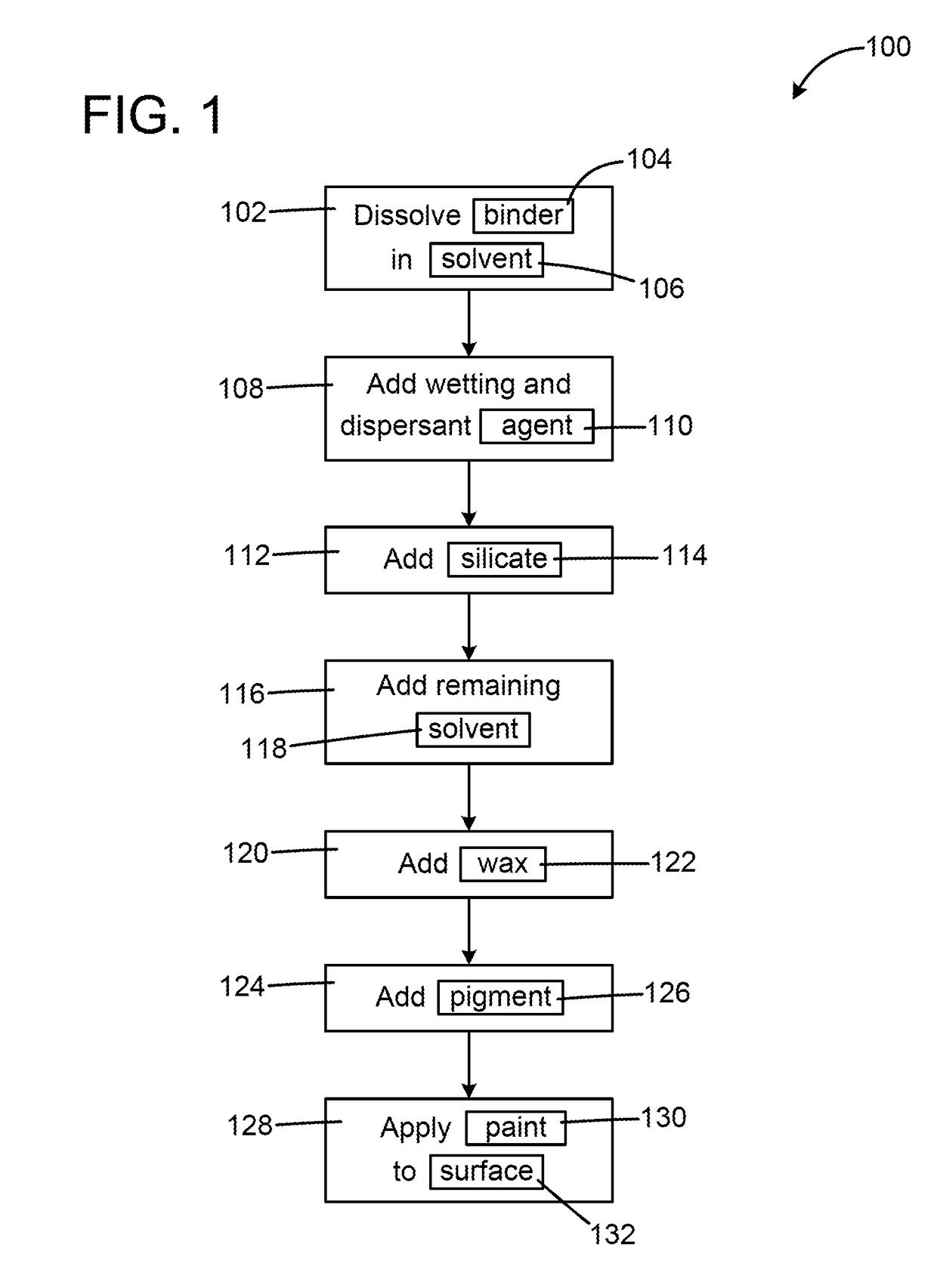Method for treating surfaces on marine objects with Anti-fouling paint
- Summary
- Abstract
- Description
- Claims
- Application Information
AI Technical Summary
Benefits of technology
Problems solved by technology
Method used
Image
Examples
Embodiment Construction
[0026]The method of the present invention includes the use of a hydrophilic non-toxic paint formulation that is easily applied. One important feature of the paint formulation is that the active antifouling ingredients have a surprising and unexpected synergistic effect which has not previously been observed or used. The novel paint formulation provides a significantly better antifouling effect although the formulation is non-toxic or substantially non-toxic, as described in more detail below. The paint formulation includes a suitable non-toxic wax (or sterol-ester), such as lanolin or its derivatives, in combination with a suitable porous inorganic solid such as silicate that provides support to the wax. The porous silicate thus functions both as a barrier and as mechanical support for the wax impregnated / supported on and inside the surface of the porous silicate. The porous silicate is thus loaded with lanolin. Calcium magnesium silicate is a suitable silicate. As mentioned above, ...
PUM
| Property | Measurement | Unit |
|---|---|---|
| Length | aaaaa | aaaaa |
| Length | aaaaa | aaaaa |
| Fraction | aaaaa | aaaaa |
Abstract
Description
Claims
Application Information
 Login to View More
Login to View More - R&D
- Intellectual Property
- Life Sciences
- Materials
- Tech Scout
- Unparalleled Data Quality
- Higher Quality Content
- 60% Fewer Hallucinations
Browse by: Latest US Patents, China's latest patents, Technical Efficacy Thesaurus, Application Domain, Technology Topic, Popular Technical Reports.
© 2025 PatSnap. All rights reserved.Legal|Privacy policy|Modern Slavery Act Transparency Statement|Sitemap|About US| Contact US: help@patsnap.com


